I got back into film photography at the start of the first Lockdown, buying a £15.00 folding camera and a roll of HP5 and fell in love with a process I hadn’t used for more than 20 years. Taking photographs of near empty streets while on local walks I learnt to regard myself as an urban landscape photographer, a term I discovered from watching a documentary film on Don McCullin who briefly describes the term. Since that time, I have collected a range of film cameras across most formats and photograph areas predominantly around the city of Plymouth, where I happen to live. Each of the chosen areas forms a project lasting a few weeks up to several months while I drill down into what I regard as the essence of the place I’m working on. Each project, generally starts in the same way, with short, exploratory walks and a basic camera set to aperture priority.
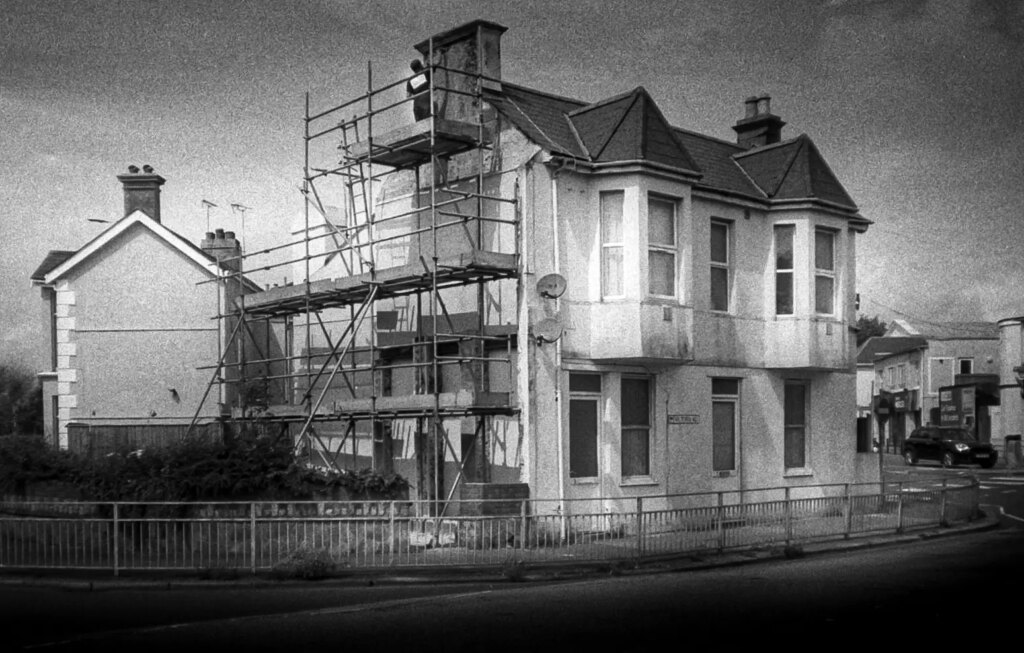
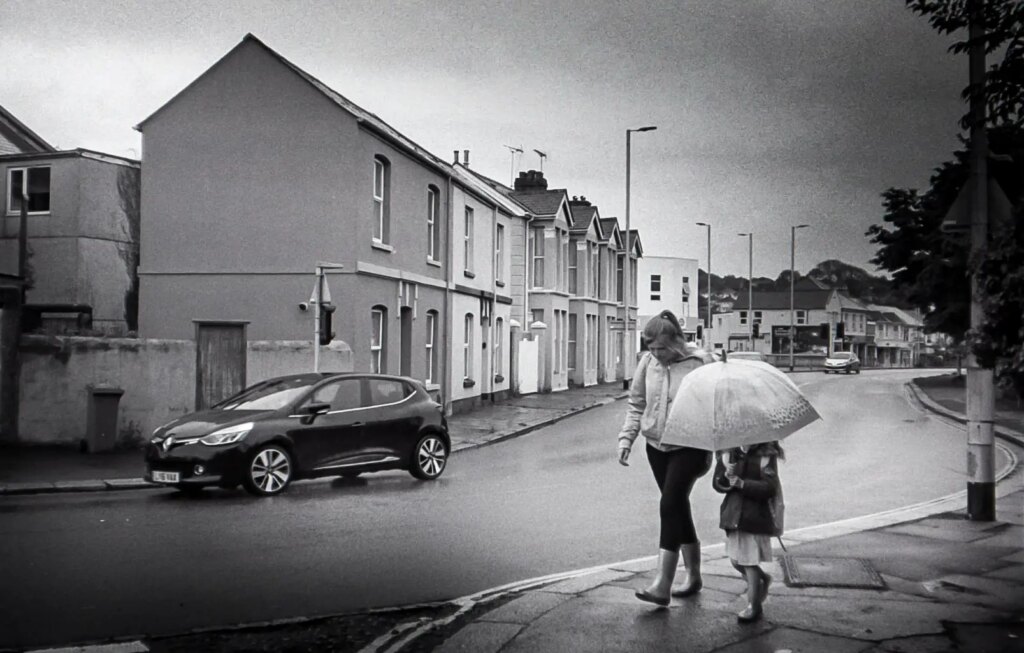
I have two or three cameras that I regularly use for these initial photo walks and the little Chinon 35EEii is one of them. Image quality is not too bad, but the small size of the camera makes it very unobtrusive – in addition, I tape over the white markings further helping to remove any sense of ‘professional photographer about’. I use a variety of film stocks, but Tri-X is the one I use most if only for better contrast.
The five frames are shot around the locality of St. Budeaux a suburb of Plymouth and where I have bought a ‘doer upper’ of a house. It is right on the edge of the city and like a lot of the west country is a bit down at heel, which always appeals to me as it reminds me of areas of post war London where I grew up in the 50’s – just substitute car washes for bomb-sites, making good use of vacant ground.
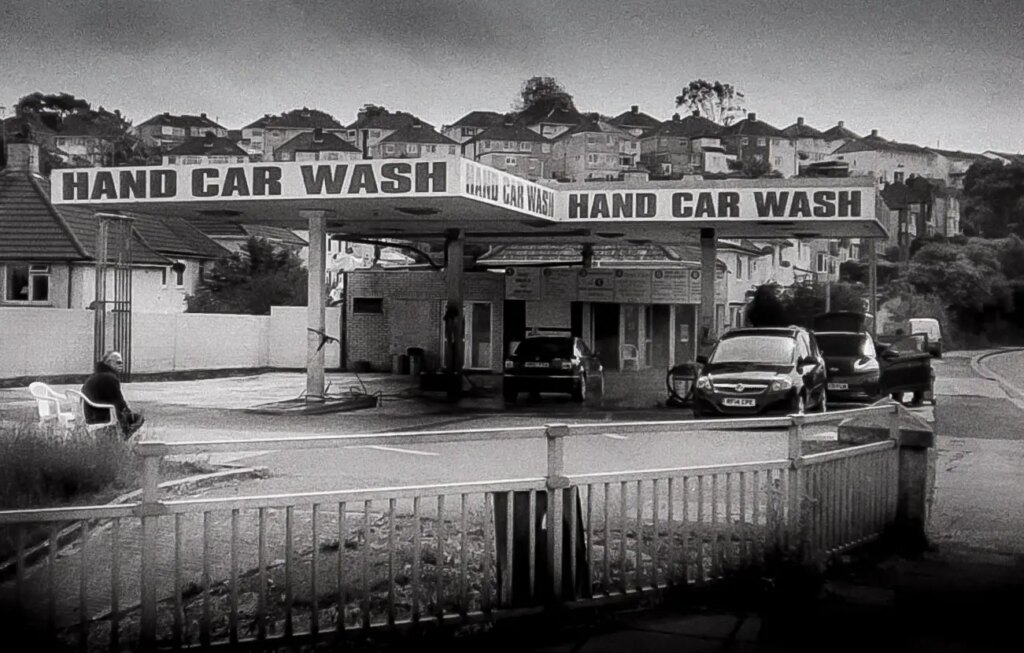
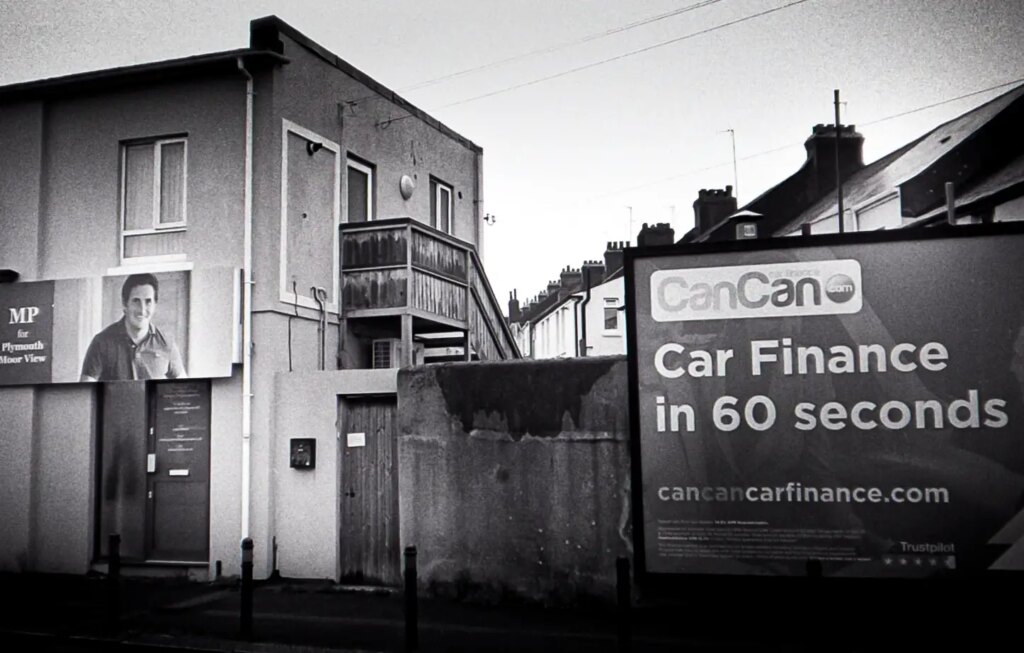
There is a small branch line connecting Plymouth with Gunnislake in Cornwall and it stops at St. Buddeaux giving an almost rural feel to the area. It is said that Plymouth is made up of 23 villages, St. Budeaux being one of them and the place does have the feel of a small country town making it both accessible and, to some extent, quite self-contained.
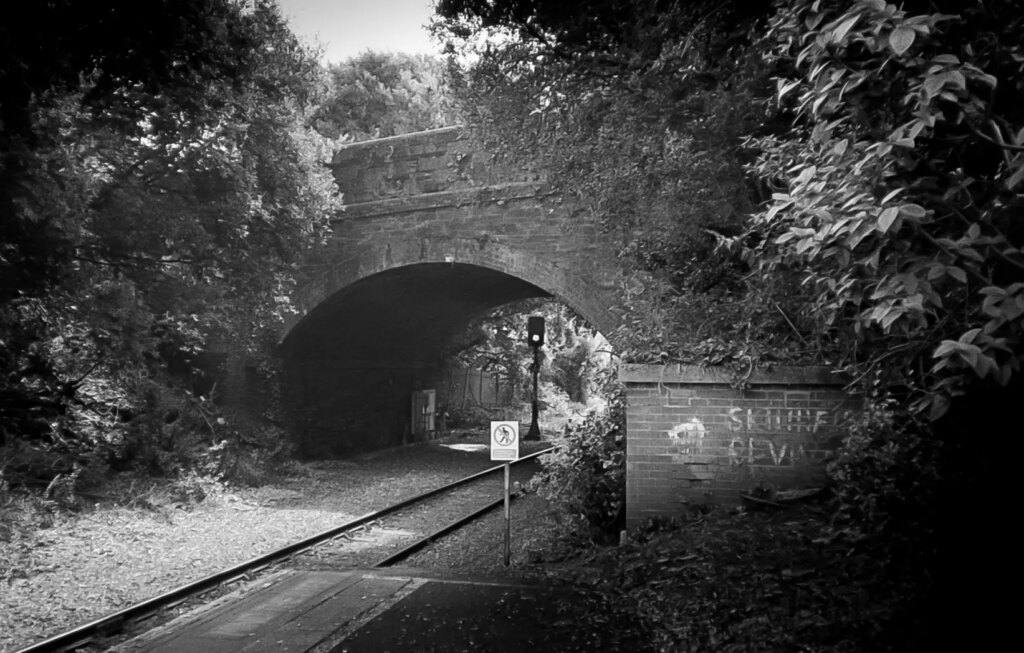
The 5 frames were shot on a typically ‘Plymouth grey’ day, with rain in the morning, gradually brightening towards early afternoon. Nevertheless, there is a surprising amount of northerly light which is quite attractive in one sense, but a challenge to the Chinon’s aperture priority metering.
All of the shots were taken at f4 to open up shadow detail slightly but exposing the film to some strong back-lighting; even so, I am not unhappy with the results after some processing in Lightroom. My approach to taking photographs on these early exploratory walks is to not be overly fussy and to rely on my instinct, after all, this is just to open the visual conversation, as it were. Therefore, I work quite quickly, taking anything that catches my eye. This run ‘n’ gun approach may not be the most considered, but it is intentional and helps to overcome the sort of critical inhibitions that can over complicate the process: in these early days, being free and easy is the best policy.
Share this post:
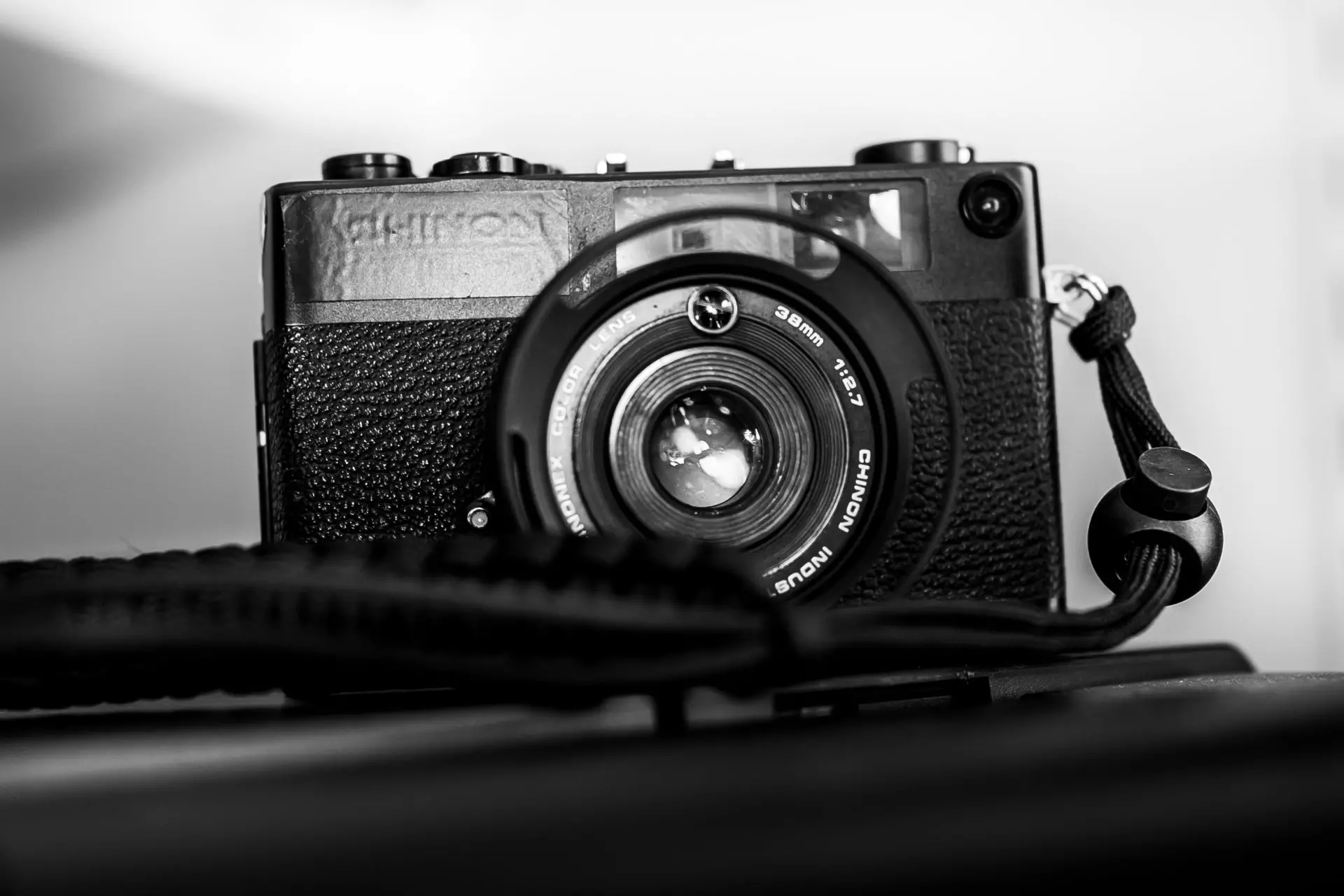








Comments
Peter Roberts on 5 Frames with a Chinon 35EEii and Kodak Tri-X – By Richard de Bulat
Comment posted: 07/06/2022
I really like these images. They certainly capture the feel of an overcast day, especially the little girl with the umbrella.
Urban landscape photographer is a good term and like you I often footslog streets with a simple camera to reconnoiter a local area before returning (perhaps) to do some more in depth photography. The thing is I usually find that there is a spontaneity about those initial shots, technically imperfect though they sometimes may be, that is missing in the subsequent images.
Thank you for posting.
Pete
Comment posted: 07/06/2022
Bob Janes on 5 Frames with a Chinon 35EEii and Kodak Tri-X – By Richard de Bulat
Comment posted: 07/06/2022
Richard de Bulat on 5 Frames with a Chinon 35EEii and Kodak Tri-X – By Richard de Bulat
Comment posted: 07/06/2022
David Nash on 5 Frames with a Chinon 35EEii and Kodak Tri-X – By Richard de Bulat
Comment posted: 08/06/2022
Comment posted: 08/06/2022